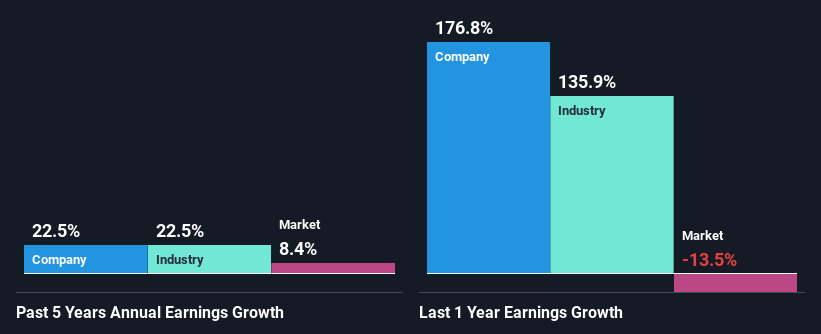Are Spark New Zealand Limited's (NZSE:SPK) Fundamentals Good Enough to Warrant Buying Given The Stock's Recent Weakness?
With its stock down 7.1% over the past three months, it is easy to disregard Spark New Zealand (NZSE:SPK). But if you pay close attention, you might find that its key financial indicators look quite decent, which could mean that the stock could potentially rise in the long-term given how markets usually reward more resilient long-term fundamentals. Particularly, we will be paying attention to Spark New Zealand's ROE today.
ROE or return on equity is a useful tool to assess how effectively a company can generate returns on the investment it received from its shareholders. In other words, it is a profitability ratio which measures the rate of return on the capital provided by the company's shareholders.
View our latest analysis for Spark New Zealand
How Do You Calculate Return On Equity?
ROE can be calculated by using the formula:
Return on Equity = Net Profit (from continuing operations) ÷ Shareholders' Equity
So, based on the above formula, the ROE for Spark New Zealand is:
59% = NZ$1.1b ÷ NZ$1.9b (Based on the trailing twelve months to June 2023).
The 'return' is the profit over the last twelve months. One way to conceptualize this is that for each NZ$1 of shareholders' capital it has, the company made NZ$0.59 in profit.
What Is The Relationship Between ROE And Earnings Growth?
Thus far, we have learned that ROE measures how efficiently a company is generating its profits. Depending on how much of these profits the company reinvests or "retains", and how effectively it does so, we are then able to assess a company’s earnings growth potential. Assuming all else is equal, companies that have both a higher return on equity and higher profit retention are usually the ones that have a higher growth rate when compared to companies that don't have the same features.
A Side By Side comparison of Spark New Zealand's Earnings Growth And 59% ROE
First thing first, we like that Spark New Zealand has an impressive ROE. Additionally, the company's ROE is higher compared to the industry average of 6.4% which is quite remarkable. Under the circumstances, Spark New Zealand's considerable five year net income growth of 23% was to be expected.
Next, on comparing Spark New Zealand's net income growth with the industry, we found that the company's reported growth is similar to the industry average growth rate of 23% over the last few years.
Earnings growth is a huge factor in stock valuation. It’s important for an investor to know whether the market has priced in the company's expected earnings growth (or decline). Doing so will help them establish if the stock's future looks promising or ominous. What is SPK worth today? The intrinsic value infographic in our free research report helps visualize whether SPK is currently mispriced by the market.
Is Spark New Zealand Making Efficient Use Of Its Profits?
Spark New Zealand's very high three-year median payout ratio of 113% suggests that the company is paying more to its shareholders than what it is earning. However, this hasn't hampered its ability to grow as we saw earlier. Although, it could be worth keeping an eye on the high payout ratio as that's a huge risk. You can see the 4 risks we have identified for Spark New Zealand by visiting our risks dashboard for free on our platform here.
Moreover, Spark New Zealand is determined to keep sharing its profits with shareholders which we infer from its long history of paying a dividend for at least ten years. Upon studying the latest analysts' consensus data, we found that the company is expected to keep paying out approximately 106% of its profits over the next three years. Still, forecasts suggest that Spark New Zealand's future ROE will drop to 29% even though the the company's payout ratio is not expected to change by much.
Summary
Overall, we feel that Spark New Zealand certainly does have some positive factors to consider. Especially the growth in earnings which was backed by an impressive ROE. Still, the high ROE could have been even more beneficial to investors had the company been reinvesting more of its profits. As highlighted earlier, the current reinvestment rate appears to be negligible. Having said that, on studying current analyst estimates, we were concerned to see that while the company has grown its earnings in the past, analysts expect its earnings to shrink in the future. To know more about the company's future earnings growth forecasts take a look at this free report on analyst forecasts for the company to find out more.
Have feedback on this article? Concerned about the content? Get in touch with us directly. Alternatively, email editorial-team (at) simplywallst.com.
This article by Simply Wall St is general in nature. We provide commentary based on historical data and analyst forecasts only using an unbiased methodology and our articles are not intended to be financial advice. It does not constitute a recommendation to buy or sell any stock, and does not take account of your objectives, or your financial situation. We aim to bring you long-term focused analysis driven by fundamental data. Note that our analysis may not factor in the latest price-sensitive company announcements or qualitative material. Simply Wall St has no position in any stocks mentioned.

